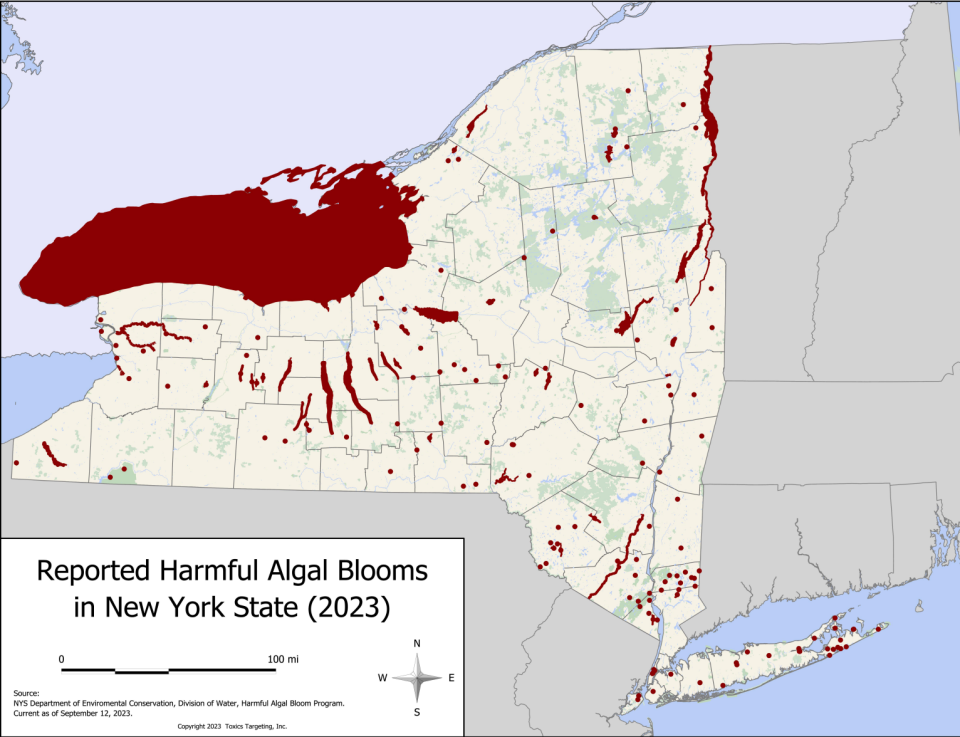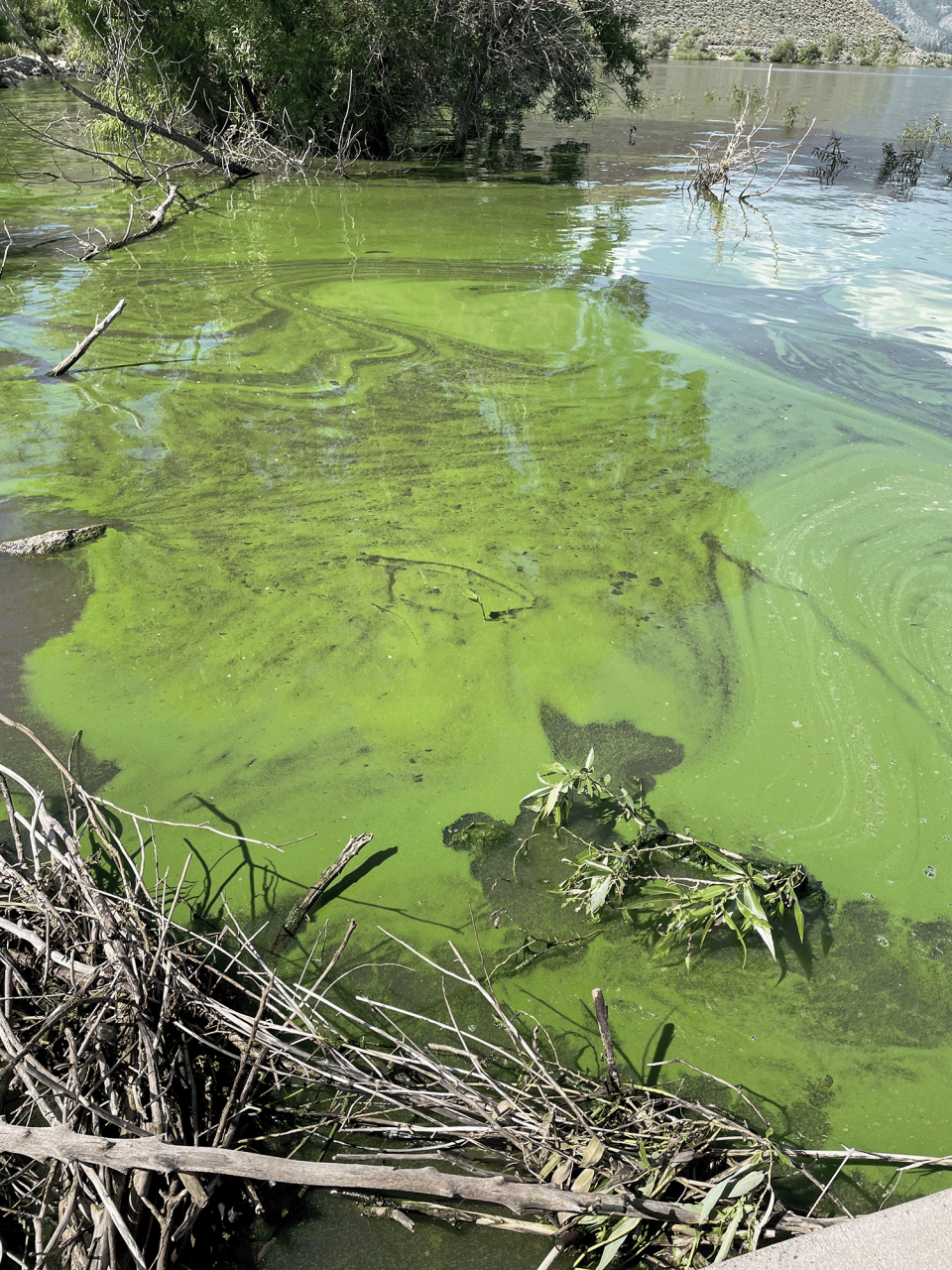Cayuga Lake has more harmful algae than any other water in the state. Here's why
Harmful algal blooms have appeared in Cayuga Lake for nearly a decade now, but this year, it’s had more than any other body of water in the state according to the New York State Department Environmental Conservation (NYSDEC).
Ithaca-based environmental data firm Toxics Targeting released a new statewide map tracking over 180 harmful algal blooms Tuesday and urged Gov. Kathy Hochul to take immediate action to eliminate harmful blooms across New York in a letter it sent to her office that same day.
“Harmful algal blooms are caused by excessive nutrients, notably phosphorus, released into lakes, rivers, streams and other waterbodies from sewage discharges and uncontrolled agricultural and stormwater runoff,” the firm said in a statement. “Phosphorus essentially fertilizes the growth of cyanobacteria that cause the blooms, and they can occur in warm weather months and persist until cold weather.”

Cayuga Lake blooms
The first signs of the blooms in Cayuga Lake this year appeared in early summer, with over 30 appearing in June alone. Since, the number of harmful blooms in the lake grown to at least 60 according to the DEC’s Harmful Algal Bloom Reporting and Notifications system.
In the past two weeks, 17 new algal blooms on Cayuga Lake were reported to the DEC, according to its harmful algal bloom reporting system.
The same number of harmful blooms, 17, cropped up in the neighboring Seneca lake in the same time frame, and only one "small localized" bloom in Owasco Lake, east of Cayuga Lake.

Identifying harmful blooms
It is hard to tell a harmful algal bloom from your typical non-damaging algal bloom, according to NYSDEC.
Algal blooms may have the appearance of spilled green paint, and typically exist in areas with environmental conditions including excess nutrients (phosphorus and nitrogen); lots of sunlight; low-water, flow conditions, or calm water; and warm temperatures.
Harmful blooms may be short-lived, appearing and disappearing in hours, or long-lived, persisting for several weeks or more, depending on water conditions.
Safety around the blooms, how to report a bloom
People and animals should avoid contact with any floating mats, scums, or discolored water, NYSDEC said.
People should never drink, prepare food, cook, or make ice with untreated surface water, and in-home treatments such as boiling the water or disinfecting it with chlorine or ultraviolet light filtration units does not protect consumers from bloom toxins.
People recreating in and on the water should be aware of the potential for HABs in any waterbody they consider using. A list of New York waterbodies with bloom reports is available on the DEC’s HAB notifications page, OPEN NY, or through Toxic Targeting. The risk for exposure while swimming is greater when blooms cover a large part of a waterbody or when water sample results show a bloom is present in the open water.
For information about the symptoms of algal bloom-induced sickness or how to report a potentially harmful algal bloom, visit the state algal bloom webpage.
This article originally appeared on Ithaca Journal: Cayuga Lake: What causes the algal blooms that turn water green?

